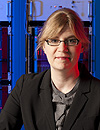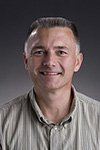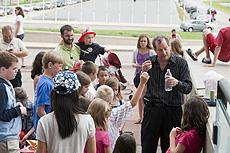Have a safe day!
Wednesday, June 6
3:30 p.m.
DIRECTOR'S COFFEE BREAK - 2nd Flr X-Over
4 p.m.
Fermilab Colloquium - One West
Speaker: Lucie Linssen, CERN
Title: Physics and Detectors at the CLIC Linear e+e- Collider
Thursday, June 7
2:30 p.m.
Theoretical Physics Seminar - Curia II
Speaker: Daping Du, University of Illinois, Urbana-Champaign
Title: B(s)→D(s) Semileptonic Form Factors from Lattice QCD and Their Applications
3:30 p.m.
DIRECTOR'S COFFEE BREAK -
2nd Flr X-Over
THERE WILL BE NO ACCELERATOR PHYSICS AND TECHNOLOGY SEMINAR TODAY
Click here for NALCAL,
a weekly calendar with links to additional information.
Upcoming conferences
|
|
Wednesday, June 6
- Breakfast: English muffin sandwich
- Portobello harvest grain
- Santa Fe chicken quesadilla
- Hoisin chicken
- Smart cuisine: Parmesan fish
- Cuban panini
- Assorted sliced pizza
- Shrimp pesto
Wilson Hall Cafe Menu |
|
Wednesday, June 6
Lunch
- Sesame-chile chicken w/ watermelon salsa
- Orzo
- Citrus chiffon cake
Friday, June 8
Dinner
Closed
Chez Leon Menu
Call x3524 to make your reservation.
|
|
Farewell reception for Leon Lederman - June 8
The Director’s Office is hosting a farewell reception for former Fermilab Director and Nobel Prize winner Leon Lederman. Please stop by the 2nd-floor crossover on Friday, June 8 between 3 and 4 p.m. to wish him well before he moves to Driggs, Idaho. Lederman's last day at Fermilab will be Monday, June 11.
|
Sam Zeller receives DOE award to track neutrinos in liquid argon
 |
Geralyn "Sam" Zeller
Photo: Reidar Hahn
|
Neutrinos are known for escaping capture. They fly through matter and their different types continuously morph into one another. That elusive, shifting behavior challenges nearly every available tool and capability scientists have to sketch their portraits.
With better tools come more detailed portraits. Last month, Fermilab scientist Geralyn “Sam” Zeller received a 2012 DOE Early Career Research Award to advance a detector technology that will capture neutrinos’ attributes with unprecedented detail. The $2.5 million award, spread over five years, will support a proof-of-principle study towards the construction of multi-kiloton liquid-argon neutrino detectors.
“There are some really important questions we want to answer about how neutrinos behave,” Zeller said. “The best chance for answering them is to study neutrinos with this exquisite detector."
Liquid-argon detectors are practically photographic in their ability to show what happens when a neutrino hits an argon nucleus. Tracks that the resultant particles leave behind are shown in high resolution, and it’s easy to distinguish the various particle types that arise from the interaction.
But information on how neutrinos behave in liquid argon detectors is sparse. Most of what is known is based on simulations rather than experiment. Also, researchers have typically gathered what they need to know from event displays – pretty pictures of events that, while useful, are relatively light on quantified information.
Zeller, who has been at Fermilab since December 2009, plans to fill the gap with an abundance of new data. The DOE award will support the analysis of neutrino data recently collected by a small (less than 1 ton) liquid-argon detector prototype called ArgoNeuT. In the next few years, Zeller’s team will also generate and analyze neutrino data using Fermilab’s new MicroBooNE detector, a 170-ton liquid-argon detector. Their findings will tell them whether they can get the expected performance out of a detector of much larger scale. They’ll also characterize exactly how neutrinos behave when interacting in argon.
Read more
—Leah Hesla
|
In memoriam: Virginia Ritchie
Virginia (Ginny) Ritchie, Assistant Proton Crew Chief and loving wife of Dr. David
Ritchie, passed away on June 3.
Services will be held Friday, June 8 from 1 to 3 p.m. at Conley Funeral Home, Elburn, Ill. Memorials in Ginny's memory can be mailed in care of Conley Funeral Home, P.O. Box 66, Elburn, Ill., 60119.
|
University of Minnesota - Twin Cities
NAME:
University of Minnesota - Twin Cities
HOME TOWN:
Minneapolis, Minnesota
MASCOT:
Goldy Gopher
SCHOOL COLORS:
Maroon and gold
PARTICLE PHYSICS COLLABORATIONS:
BESIII (at IHEP), CDMS, CMS, LBNE, MINOS, NOvA, SuperCDMS
NUMBER OF SCIENTISTS AND STUDENTS AT FERMILAB:
Nine faculty, nine postdocs and 20 graduate students
COLLABORATING AT FERMILAB SINCE:
Early 1970s
PARTICLE PHYSICS RESEARCH FOCUS:
The Minnesota high-energy physics group has a broad experimental program at the Energy, Intensity and Cosmic Frontiers of particle physics. At the Energy Frontier, we are involved in CMS analyses that search for the Higgs, precision measurements of Standard Model processes and probes for new phenomena such as SUSY and extra dimensions. At the Intensity Frontier, we are involved in a range of neutrino measurements using the MINOS and NOvA detectors. These studies include measurements of neutrino cross-sections, oscillation parameters and velocities. In addition, we tackle precision charm-sector measurements at BESIII at IHEP (Beijing) with a high level of involvement in the BESIII Monte Carlo simulation. Finally, at the Cosmic Frontier we are probing the nature of dark matter with the SuperCDMS experiment at the Soudan mine and developing a next-generation experiment at the deeper SNOLab site.
WHAT SETS PARTICLE PHYSICS AT THE UNIVERSITY OF MINNESOTA - TWIN CITIES APART?
We have a history of large-scale projects from building modules for the MINOS and NOvA detectors to managing the Soudan Underground Laboratory and the NOvA Ash River Laboratory.
FUNDING AGENCIES:
DOE
View all university profiles.
|
Underground search for neutrino properties unveils first results
From SLAC News Center, June 5, 2012
Scientists studying neutrinos have found with the highest degree of sensitivity yet that these mysterious particles behave like other elementary particles at the quantum level. The results shed light on the mass and other properties of the neutrino and prove the effectiveness of a new instrument that will yield even greater discoveries in this area.
The Enriched Xenon Observatory 200 (EXO-200), an international collaboration led by Stanford University and the U.S. Department of Energy's (DOE) SLAC National Accelerator Laboratory, has begun one of the most sensitive searches ever for a mysterious mechanism called "neutrinoless double-beta decay," in which two neutrinos – acting as particle and antiparticle – do not emerge from the nucleus.
Read more |
|
Power for the future
Randy Ortgiesen, head of the Facilities Engineering Services Section, wrote this column.
 |
|
Randy Ortgiesen
|
The proposed FY13 budget and its Congressional mark-ups include line-item funding for important utility upgrades at Fermilab as part of the Science Laboratory Infrastructure program. The upgrades will help improve the reliability of our site's high-voltage electrical and industrial cooling water systems. Project Engineering and Design funds are proposed for FY13 with construction immediately to follow in FY14, with a total project cost of $36 million.
Representatives from the DOE Office of Science were recently on site to tour the areas considered for the upgrade project, which received DOE's Critical Decision-1 (CD-1) approval in October of 2010. Since the project had experienced funding delays, the DOE team wanted to understand how the scope of the project may have changed. In particular, some minor parts of the project had to be completed over the last two years with laboratory operating funds since these urgent items couldn't wait for the delayed funding.
The most pressing and largest part of the project is the replacement of the Master Substation building and equipment. This substation and its associated equipment receive electricity from the regional power grid at 345,000 volts and reduce the voltage to 13,800 volts for distribution throughout the laboratory. Originally constructed in 1970, it has become our laboratory's most significant infrastructure vulnerability. The 42-year-old building contains equipment now considered technologically obsolete. As one enters the substation, it doesn't take long to notice the old-fashioned paper charts and large, antiquated circuit breakers. Moving through the basement of the building isn't much different from navigating through the passageways of a historic submarine.
Our high-voltage crews and electricians have successfully maintained the substation over the laboratory's history, but replacement is the only feasible option to ensure the necessary high reliability. Keeping our fingers crossed for the planned funding, timing for completion of the new, state-of-the-art substation is very good in order to sustain laboratory operations. Additionally, it should be operating just in time for the grand opening of the Muon Campus, which will reuse the former Antiproton Source. Two new buildings in the campus will soon host the Muon g-2 and Mu2e experiments.
|
ES&H weekly report, June 5
This week's safety report, compiled by the Fermilab ES&H section, contains one incident. A service subcontractor suffered a superficial scratch while tightening a screw. First aid treatment was required.
Find the full report here. |
DASTOW takes place Wednesday, June 20
 |
Jerry Zimmerman at the Mr. Freeze's Cryogenics Show during last year's DASTOW.
Photo: Reidar Hahn
|
Don't forget that June 20 is Fermilab's Daughters and Sons to Work Day.
The event starts promptly at 8:30 a.m. in front of the Atrium. Fermilab's DASTOW program includes Mr. Freeze's Cryogenics Show, a rescue demonstration at the Fermilab Fire Department, the FUNdamentals of Physics Show and a trip to see the bison.
For a complete schedule of events and to see photos from previous DASTOW events, visit the DASTOW webpage.
|
|